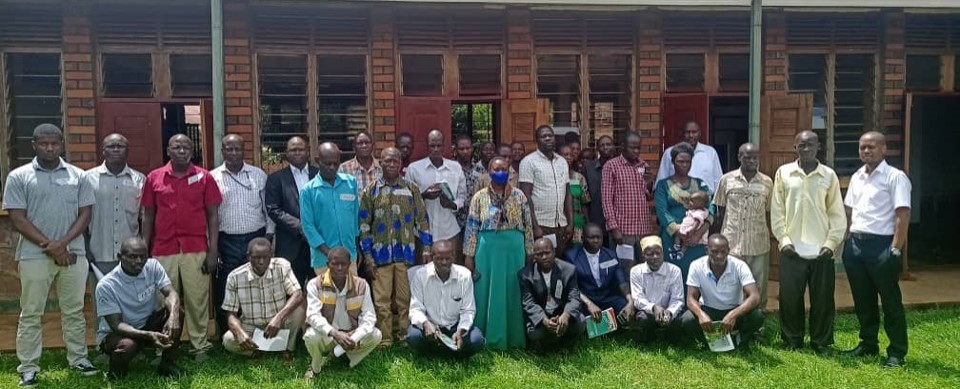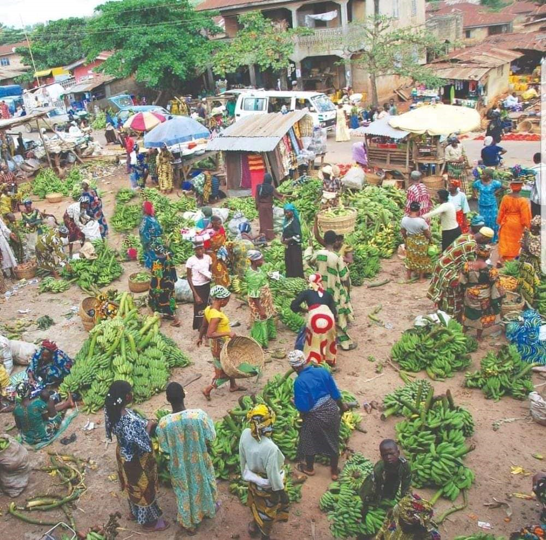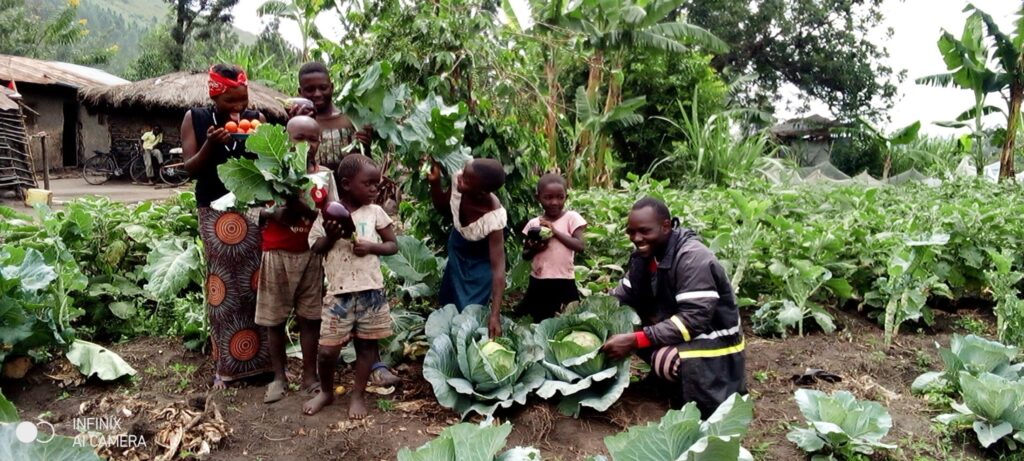In 2022, Knowledge SUCCESS collaborated with 128 Collective (formerly Preston-Werner Ventures) to conduct a rapid stock-taking exercise to document the impact of an integrated Population, Health, and Environment (PHE) project in Kenya and Uganda. During a recent webinar, panelists shared how project activities have sustained in the two countries.
On May 25, Knowledge SUCCESS hosted a webinar highlighting unique experiences implementing cross-sectoral integrated Population, Health, and Environment (PHE) activities in Kenya and Uganda. The webinar featured four panelists, all of whom are featured in a recent learning brief developed by Knowledge SUCCESS, which summarizes lessons about scale-up and sustainability of the Health of People and Environment-Lake Victoria Basin (HoPE-LVB) project activities since its closure in 2019.
New to Population, Health, and Environment (PHE)? Find more on the topic.
- Moderator:
- Itoro Inoyo, Analyst for Gender and Population, Environment, and Development (PED), USAID/PHI
- Panelists:
- Pamela Onduso, Pathfinder International, Kenya PHE Network
- James Peter Olemo, National Population Council, Uganda PHE Network
- Daniel Abonyo, Rachuonyo Environmental Conservation Initiatives (RECI), Homa Bay, Kenya
- Jostas Mwebembezi, Rwenzori Center for Research and Advocacy, Uganda
In the webinar, speakers explored ways that community groups, organizations, networks, and governments continue to implement activities that started under HoPE-LVB. They also provided recommendations for scale-up and sustainability of PHE activities moving forward.
Below we’ve included a comprehensive recap that links to exact segments within the full recordings (available in English or French).
Background
Itoro Inoyo provided an overview of Health of People and Environment-Lake Victoria Basin (HoPE-LVB)—a cross-sectoral integrated PHE project implemented by Pathfinder International and a range of partners in Kenya and Uganda from 2011-2019. The project aimed to improve interconnected health, environment, and development challenges in an ecologically biodiverse region.
In 2022, the Knowledge SUCCESS project—with funding from 128 Collective (formerly Preston-Werner Ventures) and USAID—conducted a rapid stock-taking activity to document sustained impact of HoPE-LVB project activities in Kenya and Uganda. They conducted one focus group discussion & 17 in-depth interviews with project staff, community members, and government officials. Findings were used to develop a learning brief to share lessons learned on scale-up of cross-sectoral programming.
Ms. Inoyo presented a few high-level findings from the learning brief, including a few activities from the HoPE-LVB project that contributed to PHE activities sustaining after the closure of the project. These included:
- Scale-up and institutionalizing PHE systems and processes from the start
- Involving decision makers and improving their knowledge of PHE programming
- Cultivating strong PHE champions in communities and networks
She also stressed the importance of conducting post-project evaluation activities. While donors often work in five-year project cycles, conducting post-project evaluations—or rapid stock-taking activities like this one—can help us fully recognize the project’s impact, identify challenges, and share important insights and lessons learned to inform future cross-sectoral programming.
Impact of the Kenya PHE Network
Pamela Onduso began with an overview of the official policy documents, institutions, and structures that guide the implementation of PHE activities in Kenya.
She then described the key achievements of the Kenya PHE Network, including:
- PHE training of National Council of Population and Development (NCPD) staff at the regional and county levels;
- increased funding for PHE activities in Kenya;
- development of PHE national frameworks;
- PHE communication materials (including two documentaries, linked below in related resources); and
- regional climate events hosted by the Kenyan government.
Ms. Onduso also provided some recommendations when implementing and sustaining PHE activities:
- Begin with the end in mind
- Promote PHE model households
- Embed PHE concepts in existing local institutions for sustainability and research
- Continuously advocate for PHE funding
- Nurture PHE champions—including youth
- Promote PHE learning exchange visits
- Document PHE successes
Impact of the Uganda PHE Network
James Peter Olemo spoke about the continued impact of the Uganda PHE Network.
Mr. Olemo began with an overview of the Uganda PHE Network, a group of 45 state and non-state actors that work together to promote and mainstream the PHE approach within Uganda.
He highlighted some of the key achievements of the Uganda PHE Network since the end of the HoPE-LVB project, including:
- Inclusion of PHE into key policy documents—for example, the National Population Policy (NPP) National Strategic Plan, Climate Change Policy, and Uganda FP Costed Implementation Plan
- PHE course units offered at two universities
- New funding streams and partners for PHE work
- PHE orientation and training of government officials
- Training of over 400 PHE champions
Mr. Olemo also offered the following recommendations to sustain PHE programs:
- Ensure government-led coordination mechanisms—to develop and synchronize policy and encourage government buy-in
- Establish knowledge sharing systems for PHE stakeholders
- Combine efforts to mobilize resources and conduct PHE advocacy

Sustained Activities in Homa Bay, Kenya
Daniel Abonyo began with an overview of PHE activities in Homa Bay, Kenya. He provided an overview of what RECI achieved during the HoPE-LVB project, including initiation of PHE model households, establishing a group of male champions, tree planting, and energy saving stoves.
Mr. Abonyo then highlighted what has been sustained after the closure of HoPE-LVB, including:
- Improved participation of men in health (specifically FP, antenatal care, and HIV/AIDS texting) and women in natural resource management activities
- Improved engagement of hard-to-reach populations in PHE activities
- Scale up of PHE approach to 1,200 model households—which includes activities related to livelihoods, kitchen gardens, tree planting, healthy timing and spacing of pregnancies, among other topics
- Cultivation of additional PHE champions at the community level

Sustained Activities in Uganda Districts
Jostas Mwebembezi began with an overview of the HoPE-LVB activities in the Kasese District in Uganda. The HoPE-LVB project activities (which continue today) include mobile clinics that integrate family planning with other health services (malaria, HIV, etc.), sustainable agriculture for better food security and nutrition, improved livelihoods, and awareness of environmental conservation at the household and community levels.
Since the closure of HoPE-LVB, PHE achievements in the Kasese District have included the following:
- Successful door-to-door visits reduced adolescent pregnancies by 20%
- Opening of a local adolescent health clinic, which reached 10,051 first time users, including over 1,771 people with disabilities.
- Over 1,000 trees planted
- Over 1,000 households reached with PHE activities
Mr. Mwebembezi concluded that the integrated PHE approach is a cost effective model at the district level. PHE brings together district agriculture, health, natural resource, and education departments to plan together in their annual budgets, engaging local religious leaders, school teachers to better achieve the sustainable development goals at the household level.
Questions Answered During the Webinar
Question: How are you using digital technologies in rural communities for PHE?
Answer: (Daniel Abonyo) Our project is being implemented in a rural community with limited internet connectivity. But technology is evolving, and because young people often have more access to technology, we started a social platform. The platform is friendly to youth, and we can engage the public to start discussions online. We often start discussions through WhatsApp or Facebook to solicit views from the community. Once we get information from the public, we can implement PHE interventions with input from our local community.
Question: Do you work with urban and environmental planners to address PHE issues—and if so, are there any specific issues you found integrating health and urban planning?
Answer: (James Peter Olemo) Our country is looking to move away from an agrarian economy to a more middle-income status. However, there is increasing appreciation for urban planning. The challenge now is that the human resources are extremely limited. This is a serious challenge for the country—but there is appreciation, and a need for increased urban planning.
Answer: (Pamela Onduso) One of the issues that comes up during Kenya PHE Network meetings is the importance of urban PHE programs and projects. There are—in some towns and in the capital of Nairobi—efforts to put together urban PHE projects and programs that are still being studied. However, there is limited space in urban areas for planting and other PHE efforts. These have not been rigorously studied, but because of the migration of populations from rural areas into cities, it is pushing PHE practitioners to address urban PHE more.
Additional Questions
Additional questions were posed by the audience during the webinar, and panelists provided responses after the webinar concluded. Answers to these questions can be found below.
Are any of the Kenya PHE policy documents available?
Answer: (Pamela Onduso) All Kenya PHE policy documents are available through the Government of Kenya, National Council for Population and Development website: www.ncpd.go.ke
To date, in your respective countries, are there any studies showing a link between reproductive health and conservation (environmental improvement)?
Answer: Yes, this is described in the Health of People and Environment in the Lake Victoria Basin (HoPE-LVB) Project Evaluation.
To what extent is the planned Africa Climate Week building on the recommendations from the Africa Health Agenda International Conference held in Kigali in March, 4-9, 2023?
Answer: (Pamela Onduso) The Africa Climate Week event (September 4-8, 2023) is envisaged as a build up to COP28. Planning is ongoing hence more information will be provided in the near future from the Government of Kenya as the host country. Four Regional Climate Weeks will be held this year to build momentum ahead of the UN Climate Change Conference COP28 in Dubai and the conclusion of the first Global Stocktake, designed to chart the way for fulfilling the Paris Agreement’s key goals.
This event will be organized in parallel with the African Climate Action Summit (4-6 September), also hosted by Kenya.
Could we have the documentation for the understanding of the approaches implemented on this project which has generated so much success?
Answer (Jostas Mwebembezi): There is a guide for an entity to successfully implement PHE model households and a strategy for National PHE Networks.
It seems you have a successful advocacy effort across. What do you think is the main success factor?
Answer (Jostas Mwebembezi): We have been successful in bringing together different local government departments to plan together—for example, Agriculture and Health Departments could both address a malnutrition problem.
Also, at the level of the programmatic team of this project, can the link be made with resource persons to guide all the actors wishing to use these approaches within the framework of my implementation of their project of development?
Answer (Jostas Mwebembezi): The HoPE-LVB project established a learning hub in Kasese district that welcomes all actors wishing to learn how to implement the PHE approach and the Uganda PHE Network secretariat welcomes new members. For more information about both, contact rcra@rcra-uganda.org.
You mentioned the EAC PHE Strategic Plan expired in 2020. Have there been efforts to plan for the current period?
Answer (James Peter Olemo): Yes. With the closure of the PHE HoPE- LVB project, Uganda developed its own PHE strategic plan for the National PHE NetWork aligned to the National Development Plan III.
May one of the panelists share how PHE has been integrated into district level policy and program planning and implementation in Uganda?
Answer (James Peter Olemo): PHE is integrated in the National Population Council Strategic Plan and implementation at the Sub national level is done by the districts where the model homes are established and supported. Direct integration into the District Development plans has not yet been achieved but efforts are underway in that direction.
For more information about HoPE-LVB:
- Learning brief
- Documentary: PHE National Council for Population and Development (NCPD) Documentary
- Documentary: Integrating Population, Health, and Environment for Sustainable Development in Kenya
- HoPE-LVB Toolkit
For more information about PHE and PED:
About Population, Health, and Environment (PHE) and Population, Environment, and Development (PED)
Population, Environment, and Development (PED) and Population, Health, and Environment (PHE) are integrated community-based approaches that recognize and address the complex relationships between people’s health and the environment. These multi-sectoral approaches strive to improve voluntary family planning and reproductive health care and conservation and natural resource management within the communities living in ecologically rich areas of our globe.





